

Josh Nevett
2025 Hyundai i30 N auto review
1 Month Ago
Hyundai's entry-level hatchback has been given a new look for 2021, but it's fundamentally very similar to its predecessor. That's mostly a good thing.
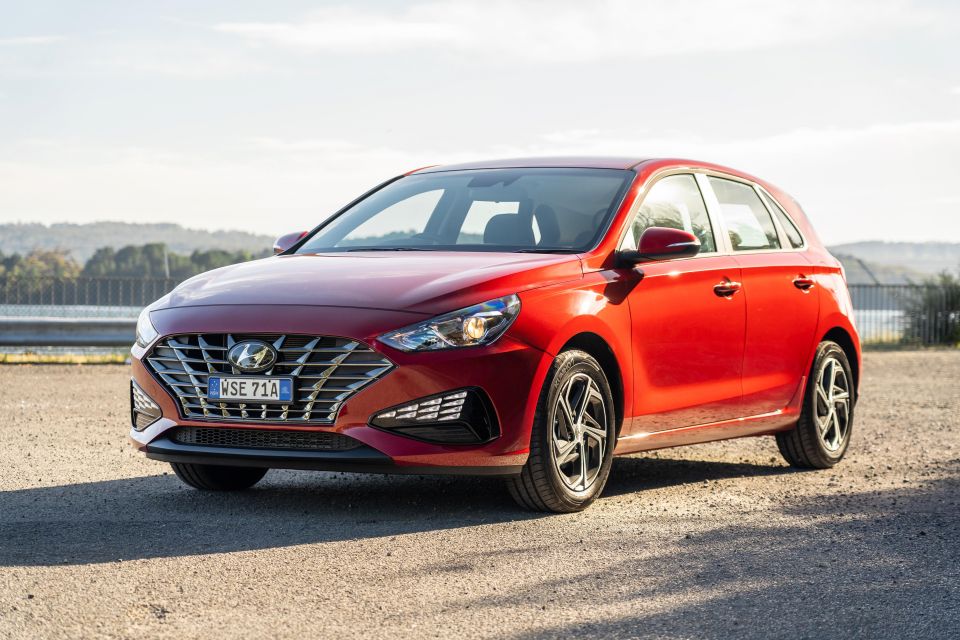
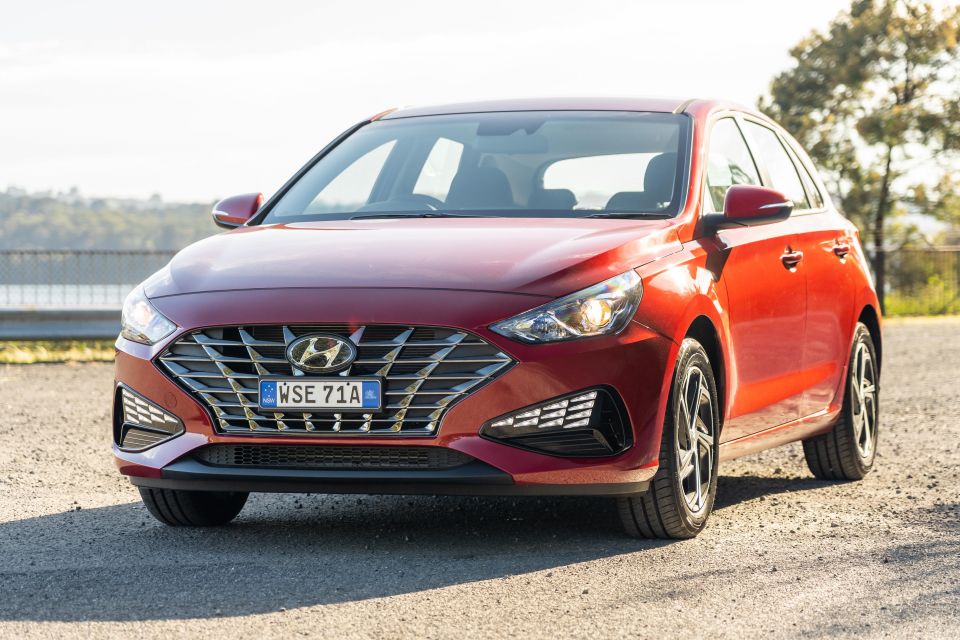

Contributor
New from
$20,440
excl. on-roads

Contributor
New from
$20,440
excl. on-roads


Contributor
New from
$20,440
excl. on-roads

Contributor
New from
$20,440
excl. on-roads
Quickly see how this car stacks up against its competition. Select any benchmark to see more details.
Where expert car reviews meet expert car buying – CarExpert gives you trusted advice, personalised service and real savings on your next new car.
The eye-catching Hyundai i30 Sedan might be hogging the headlines, but it’s not the only new i30 to launch this year.
Now four years old, the i30 hatchback has also been given a nip and tuck for 2021. Unlike the clean-sheet Sedan, which is a rebadged version of the new Elantra, the new i30 hatch is a mildly massaged take on its strong-selling predecessor.
External changes are limited to a reworked grille and aggressive new LED daytime running lights integrated into the bumper, along with a range of new alloy wheel designs.
The update is similarly subtle inside, where the infotainment system has been tweaked, the seat fabric has been updated, and the instrument binnacle is home to a new digital display.
Luckily, there wasn’t all that much wrong with the i30 to begin with.

The base 2021 Hyundai i30 hatchback, which is simply badged the ‘i30’, is priced from $23,420 before on-road costs with a manual transmission.
The automatic transmission fitted to our tester ups that figure by $2000, while the Fiery Red paint you see here is one of five premium finishes that require an extra $495. Polar White is the only no-cost option.
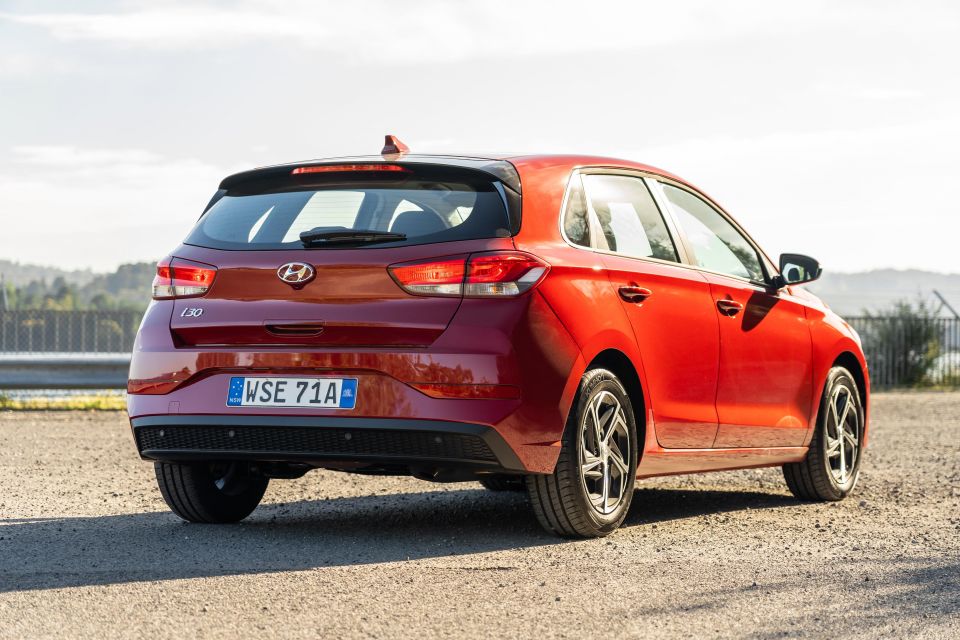
That means the sticker price for the car on test here is priced at $25,915 before on-road costs.
Stepping up to the i30 Elite removes the manual option and brings a $26,920 before on-roads starting price, while the range tops out with the i30 N Line Premium priced from $36,220 before on-roads with a dual-clutch auto transmission.
At the end of the day, the price you pay at the dealership will be dependent on a number of factors such as when you want to buy (is the dealership chasing sales?), the age of the model you’re purchasing (is a new generation model being launched soon) and of course your strength as a negotiator.
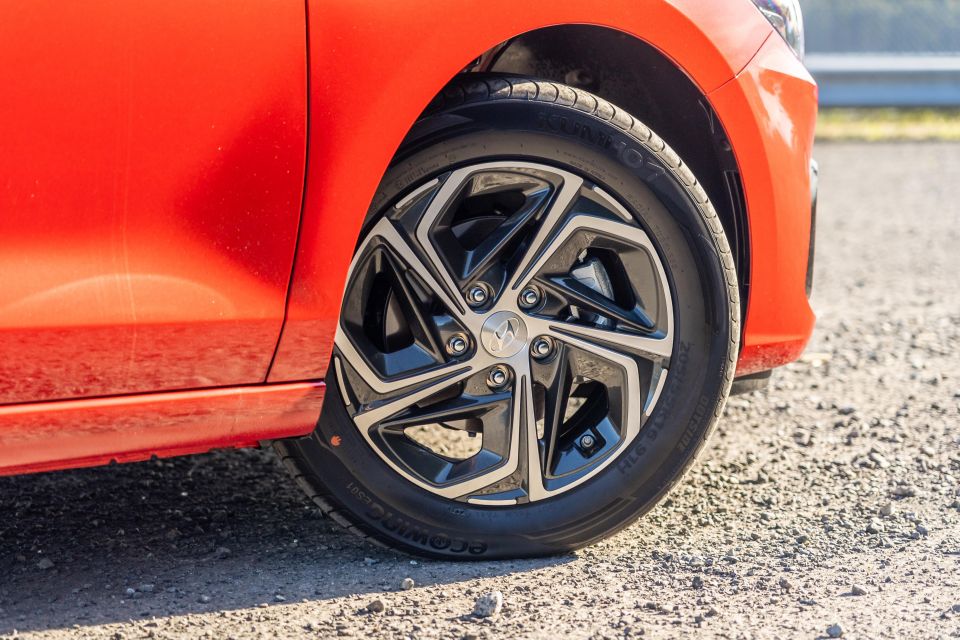
The i30 has always been well equipped, and the 2021 update doesn’t break with tradition.
On the inside, the 2021 i30 features a new 8.0-inch infotainment system with wireless Apple CarPlay and Android Auto, DAB+ digital radio, Bluetooth connectivity, and a six-speaker sound system.
The steering wheel and gear shifter are wrapped in leather, while the seats are trimmed in cloth.

The driver is faced with a new 7.0-inch digital instrument binnacle in place of the old analogue dials, and there’s adaptive high-beam, adaptive cruise control, automatic headlights, a reversing camera with rear parking sensors, and rear air vents.
Dual-zone climate control is reserved for the higher-spec Elite, while leather-appointed seats are standard from the Active up.
Outside are 16-inch alloy wheels, and LED daytime running lights and indicators integrated into the front bumper.
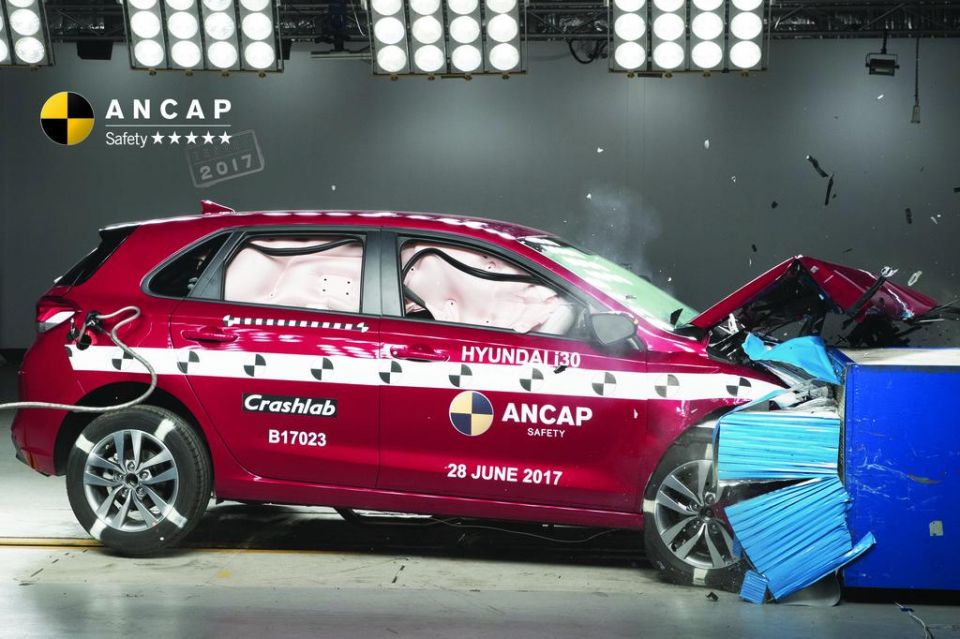
The i30 hatch scored five stars in ANCAP testing carried out in 2017. It scored 35.01 out of 37, and packs seven airbags as standard.
Our base i30 tester features a reversing camera, autonomous emergency braking with pedestrian and cyclist detection, adaptive cruise control, lane-keeping assist, and driver attention monitoring.
Previously, the base i30 Go and Active needed a $1750 package to include the full active safety suite.
Moving up the i30 range to the Elite gets you rear cross-traffic alert and blind-spot monitoring.
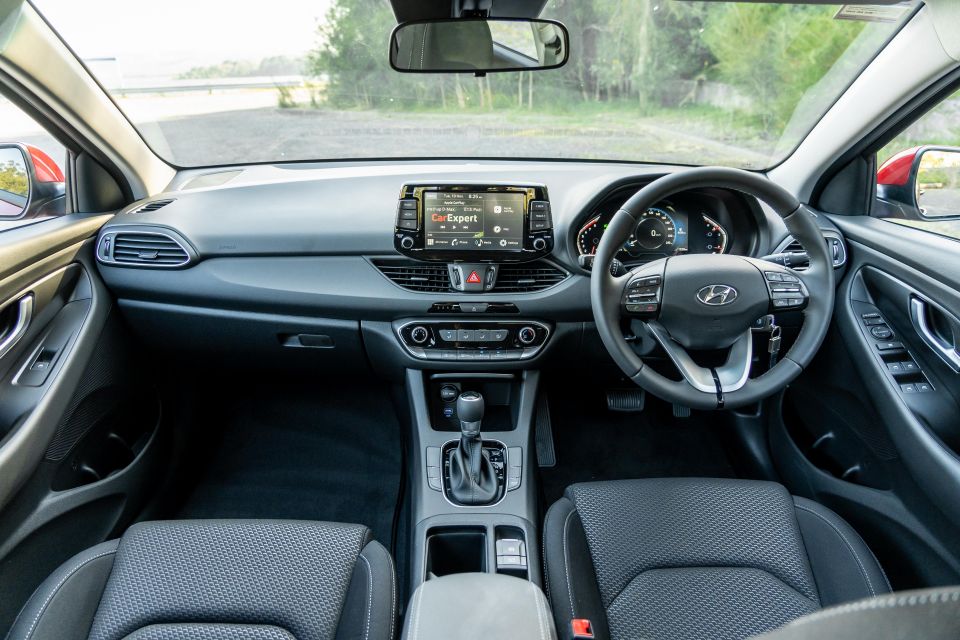
The i30 hatchback has always been simple and effective on the inside, and the 2021 update doesn’t do much to change that.
It’s a fundamentally good interior. The front seats are well padded and bolstered, and the driving position is accomodating for lanky drivers.
Everything is where you’d expect it, from the (manual) air conditioning dials to the electronic handbrake and auto brake hold button. Storage spaces are abundant, from the covered space at the bottom of the dashboard to the cupholders, central bin, and spacious door pockets.
The seat drops down low, and the steering wheel telescopes out to meet you. It hasn’t really changed for 2021, which means it still feels nice in the hand with a chubby, well-padded rim and logical controls.
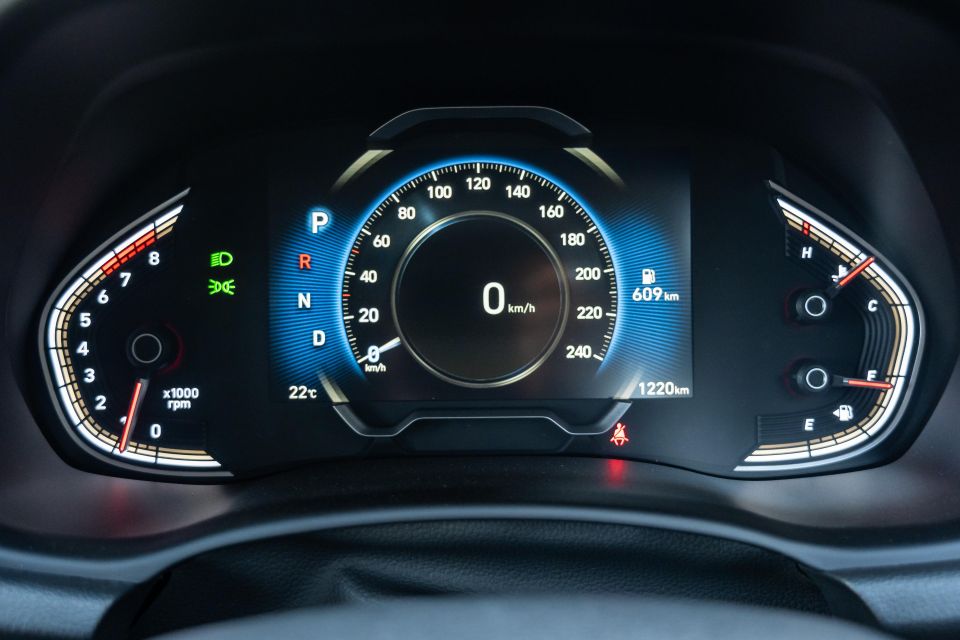
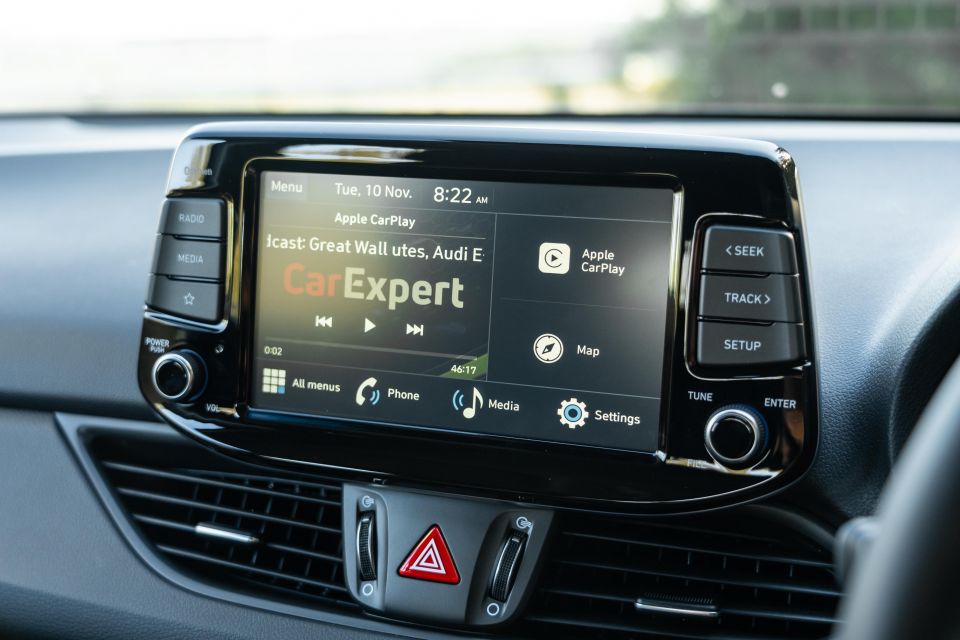
The biggest change in the front is the 7.0-inch digital instrument display, which has been borrowed from the larger Santa Fe SUV. It’s a meaningful step up on the analogue gauges from the pre-update i30, with handsome graphics that shift based on the drive mode and a clear, simple speed readout in the middle.
Also new for 2021 is the 8.0-inch infotainment system, which gains wireless Apple CarPlay and Android Auto – the larger system in more expensive models only has wired smartphone mirroring, oddly.
It’s very functional, with simple menus and clear graphics, but it also looks very basic compared to what’s on offer in more expensive i30 models. Wireless CarPlay is nice to have on paper, but in practice it was too buggy to be considered useful.
Connecting is simple, but the system constantly drops out and displays a message saying “the device stopped responding”. Two iPhones, both less than two years old and running the latest operating system, had the same problem.

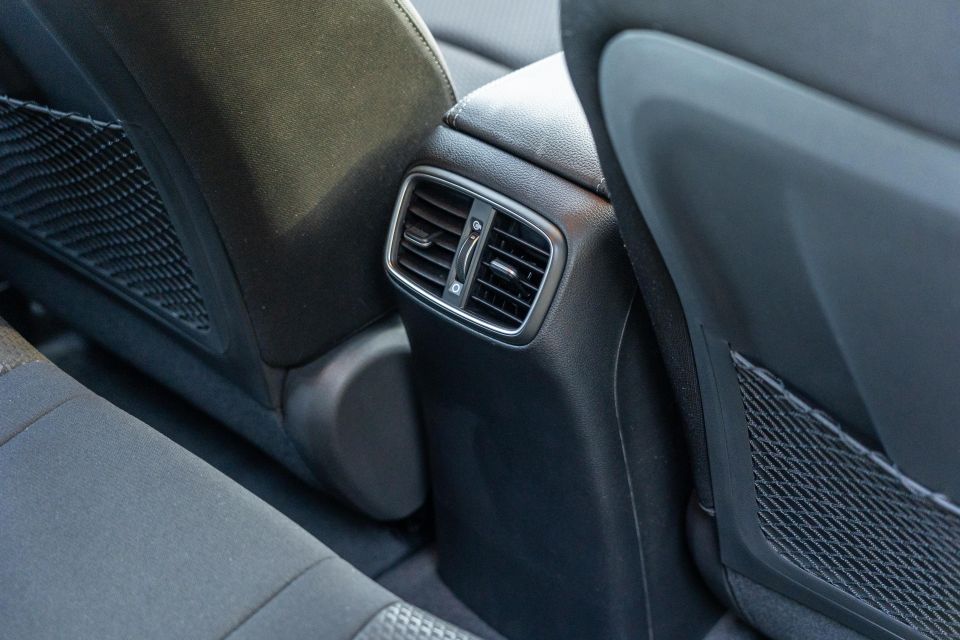
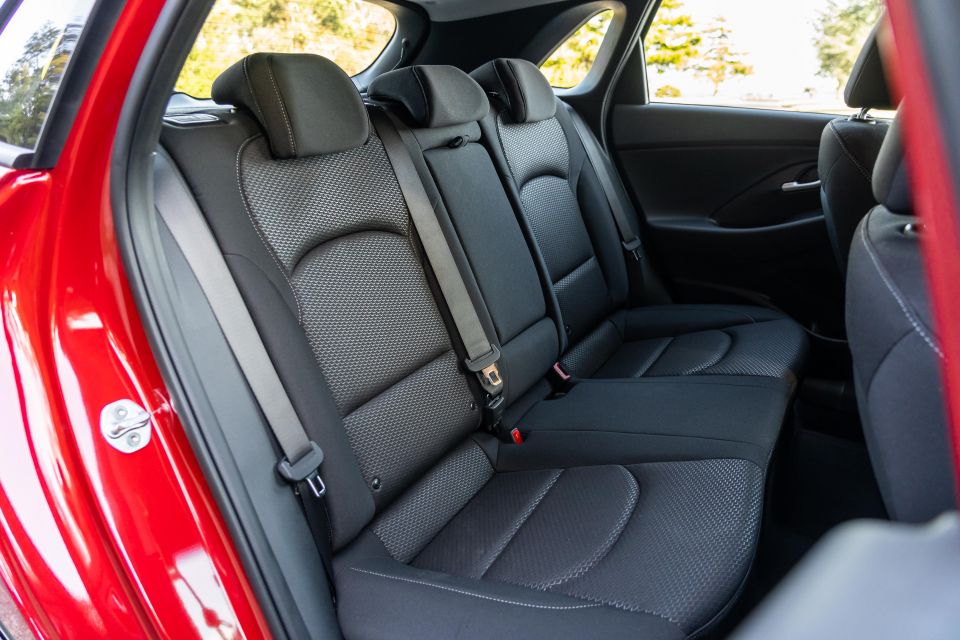
It’s a shame, because wireless CarPlay is excellent when executed properly. There’s no mapping built into the factory system, nor does the voice control do anything unless there’s a phone connected, so smartphone mirroring is integral to its operation.
Down back the i30 doesn’t set new standard for space, nor is it lacking compared to newer rivals. Legroom and headroom are fine for normal-sized adults sitting behind normal-sized adults, although taller passengers will feel a bit cooped up.
With map pockets, air vents, and spacious door pockets there are plenty of amenities.
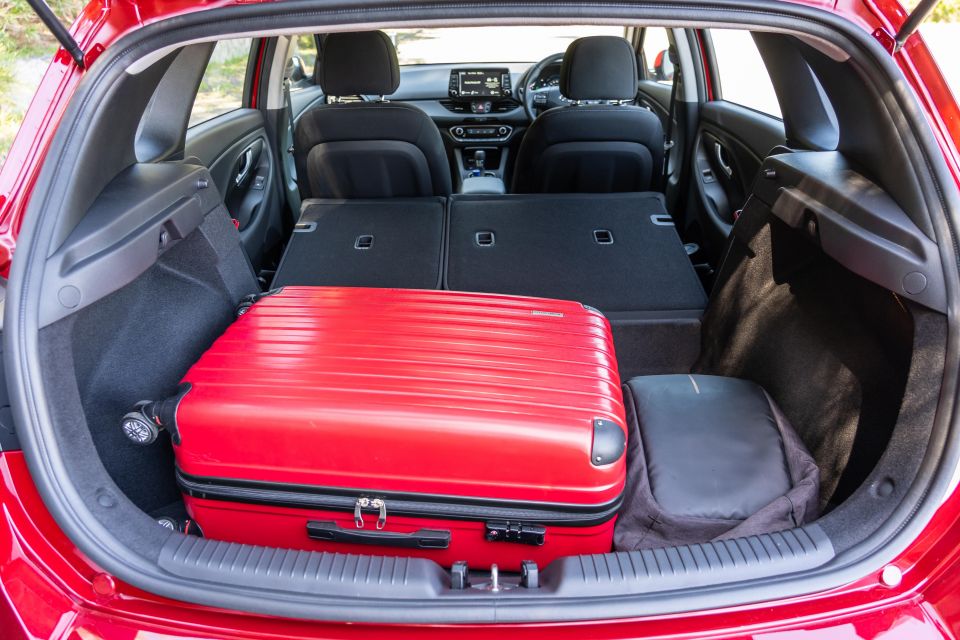

Boot space is 395L with the rear seats in place and 1301L with them folded, and the boot itself is deep and wide.
There’s quite a pronounced loading lip which may cause older buyers some headaches, but there’s not much wrong with the boot in the i30.
The fact you get a full-sized spare wheel under the floor is a bonus.
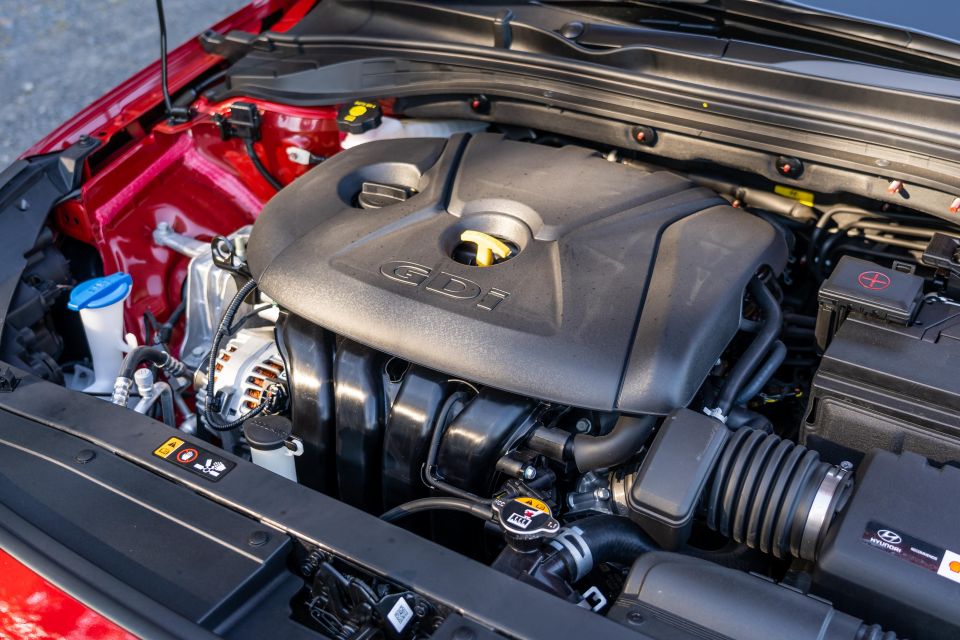
Like before, the base i30 gets a naturally-aspirated 2.0-litre, four-cylinder petrol engine producing 120kW of power and 203Nm of torque.
It’s sent to the front wheels through a six-speed torque converter automatic, although a six-speed manual is available as an option.
Claimed fuel economy is 7.4L/100km on the combined cycle, we saw 8.4L/100km on a week that included both city and highway driving.
The i30 drinks the cheapest 91RON unleaded fuel, and has a 50L fuel tank.

With a naturally-aspirated engine and torque converter automatic, the i30 is overwhelmingly normal to drive.
There’s no histrionics or quirks, it just gives you exactly what you’d expect. Performance is perfectly adequate for life in the city, with decent torque on tap from low in the rev range.
With no turbocharger there’s no eye-opening mid-range shove in the back, but the six-speed transmission is surprisingly willing to kick down when you lean on the throttle, so there’s usually punch when you need it.
Keeping your foot welded to the firewall brings about more speed, but also more noise and vibration. There’s no real benefit to chasing the redline unless you’re the sort of sadist that likes to hear an otherwise vanilla engine scream its lungs out. North of around 4500rpm is the thrash zone.
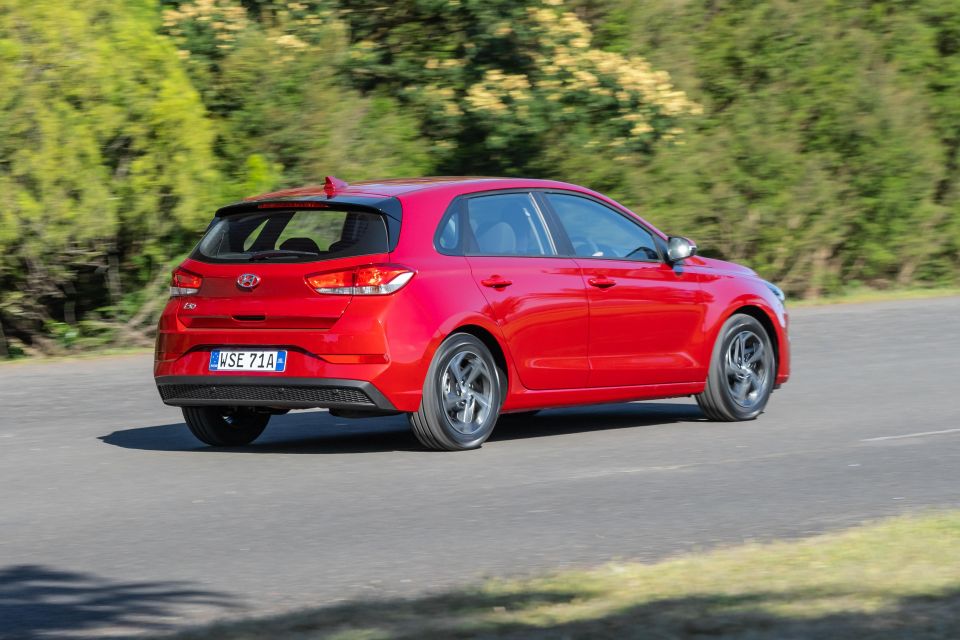
Although it doesn’t have the same independent rear suspension setup as the sportier N Line, there’s plenty of fun to be had in the base i30.
The steering has a lovely sense of weight to it when the speed rises, and the locally-fettled suspension delivers a planted, solid feeling on the road that doesn’t come at the cost of ride comfort.
It feels grown up and can be thrown around in a way few of its competitors can match, although it can’t quite match the Ford Focus for outright liveliness. Then again, that’s not really the point here.
High-speed prowess hasn’t come at the cost of low-speed comfort. The steering is still light enough to make parking a doddle, and potholes are dispatched with ease by the 16-inch wheels standard on the base i30.
There are only two real knock on refinement, first of which is the thwack you get from the car as it hits expansion joints or sharper bumps – it slightly undermines the shine on what is otherwise a polished drive.
Second is the intrusive lane-keeping and lane-centring assist systems, both of which are far too heavy-handed.
Lane-centring assist feels like it’s constantly trying to fight you, constantly tugging at the steering wheel in normal driving.
It’s maddening. Thankfully it can be switched off with a button on the wheel. The lane-keeping assist is less intrusive, but can still be too determined to take charge at times. The best assist systems are smooth and subtle, and the steering aids in the i30 tick neither of those boxes.
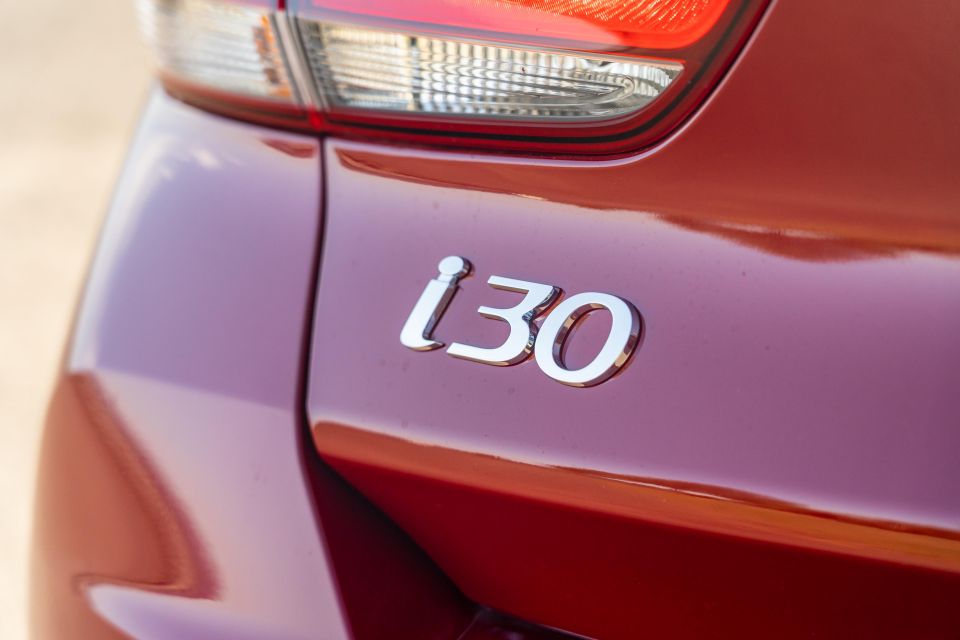
Where expert car reviews meet expert car buying – CarExpert gives you trusted advice, personalised service and real savings on your next new car.
Maintenance in the i30 is required every 12 months or 15,000km. The average price of a service over the first five years of ownership is $279 under Hyundai’s capped-price service program.
Like the wider Hyundai range, the i30 is backed by a five-year, unlimited-kilometre warranty.

Hyundai hasn’t changed all that much with the 2021 i30 hatchback, for better and for worse.
The positives? It’s still eminently practical and excellent to drive. If it’s fuss-free motoring you’re after, the i30 delivers at a reasonable price.
The facelift is subtle, but it hasn’t ruined the look of what’s always been a handsome (if unassuming) hatchback. It just lacks a bit of wow factor compared to the all-new i30 Sedan, which costs just $1300 more.
And while we don’t expect whiz-bang technology or face-melting performance from an entry-level hatch, up against a tough crop of rivals – from the Toyota Corolla to the Mazda 3, not to mention the incoming Mk8 VW Golf – the base i30 hatch is starting to look and feel more mild than wild.

Click the images for the full gallery
MORE: Hyundai i30 news and reviews MORE: Everything Hyundai
Where expert car reviews meet expert car buying – CarExpert gives you trusted advice, personalised service and real savings on your next new car.
Discover and compare similar models
Scott Collie is an automotive journalist based in Melbourne, Australia. Scott studied journalism at RMIT University and, after a lifelong obsession with everything automotive, started covering the car industry shortly afterwards. He has a passion for travel, and is an avid Melbourne Demons supporter.


Josh Nevett
1 Month Ago


William Stopford
30 Days Ago


James Wong
29 Days Ago


Matt Campbell
27 Days Ago


Max Davies
13 Days Ago
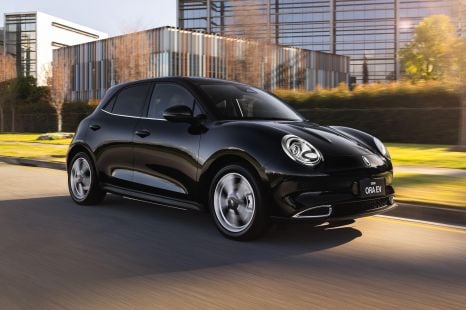

William Stopford
2 Days Ago
Suggested Comparisons